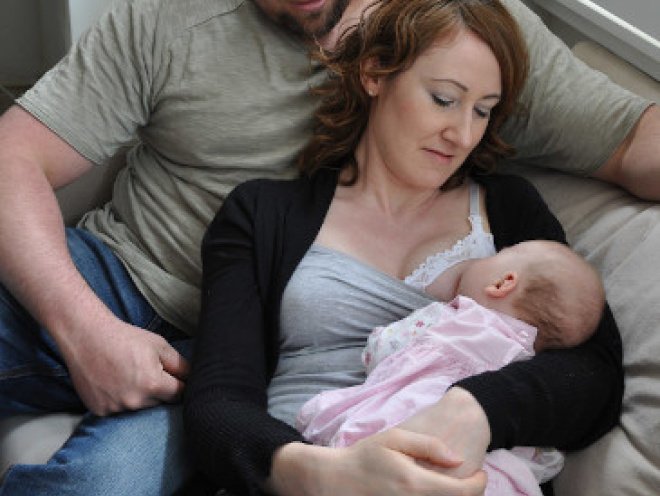Top 5 Bodyfeeding positions that work!
As a postpartum doula, I often work with new parents who are navigating the early days of breastfeeding, or as I prefer to say, "bodyfeeding." Finding the right position is crucial for a successful and comfortable feeding experience for both the parent and the baby. Proper positioning can help prevent common issues such as sore nipples, poor latch, and even back pain. Let’s explore the top five lactation positions that are supported by evidence and widely recommended by lactation experts.
1. Laid-Back (Biological Nurturing) Position
What It Is: Also known as the "biological nurturing" position, the laid-back position involves the parent reclining comfortably with the baby lying on their chest or tummy, allowing gravity to assist in keeping the baby in position.
Why It Works: This position taps into the baby’s natural feeding instincts. Research has shown that when babies are placed on their parent's chest, they instinctively seek out the breast, leading to a deeper latch and more efficient feeding. The laid-back position also promotes skin-to-skin contact, which is beneficial for bonding and can help stabilize the baby's heart rate and breathing.
Best For: Newborns, parents recovering from a cesarean section, and those looking for a relaxed, natural feeding experience.
2. Cradle Hold
What It Is: The cradle hold is a classic breastfeeding position where the baby’s head rests in the crook of the parent's arm, with the baby's body facing the parent and aligned tummy to tummy.
Why It Works: The cradle hold is one of the most commonly used positions because it allows for close contact and easy control over the baby's head. Studies indicate that this position can be effective for many parents, especially once they become comfortable with bodyfeeding. However, ensuring the baby’s head and neck are well-supported is crucial to avoid strain on both the parent and the baby.
Best For: Parents with some experience in breastfeeding, and those feeding full-term infants.
3. Cross-Cradle Hold
What It Is: Similar to the cradle hold, the cross-cradle position involves the parent supporting the baby’s body with the opposite arm from the breast being used. The parent’s hand supports the baby’s head, while the other hand guides the breast.
Why It Works: This position offers more control over the baby’s head, which can be particularly helpful for parents who are working on perfecting the latch. Evidence suggests that the cross-cradle hold can be beneficial for babies who are struggling to latch or for parents who need a bit more support in the early days of breastfeeding.
Best For: Newborns, preterm babies, and those working through latch difficulties.
4. Side-Lying Position
What It Is: In the side-lying position, both the parent and baby lie on their sides facing each other. The baby’s mouth is aligned with the breast, allowing for a relaxed feeding experience, especially during nighttime feedings.
Why It Works: This position is particularly recommended for nighttime feedings or for parents recovering from childbirth, as it minimizes the need for sitting up. Research supports the side-lying position for its ability to promote rest while feeding and its effectiveness in preventing issues like clogged ducts, as it allows the baby to drain the breast more thoroughly.
Best For: Nighttime feedings, parents recovering from a difficult birth, and those who prefer a more relaxed feeding position.
5. Football (Clutch) Hold
What It Is: In the football hold, the baby is tucked under the parent’s arm like a football, with the baby’s legs extending behind the parent and the head resting near the breast.
Why It Works: This position is particularly beneficial for parents who have had a cesarean section, as it keeps the baby off the abdominal area. It also offers good visibility of the latch, which can be helpful for parents learning to breastfeed. Research shows that the football hold is effective for parents with larger breasts, as it allows better control and comfort.
Best For: Parents recovering from a cesarean, those with larger breasts, and parents feeding twins (one baby on each side).
Finding the Right Position for You
Choosing the right bodyfeeding position is a personal journey. What works best for one parent and baby might not work for another, and that’s okay. The key is to experiment with different positions until you find what feels most comfortable and effective for both you and your baby.
Remember, bodyfeeding is a skill that both you and your baby are learning together. If you encounter challenges, don’t hesitate to reach out for support from a lactation consultant, doula, or other healthcare professional. With the right guidance and a bit of practice, you’ll find the position that works best for you.






